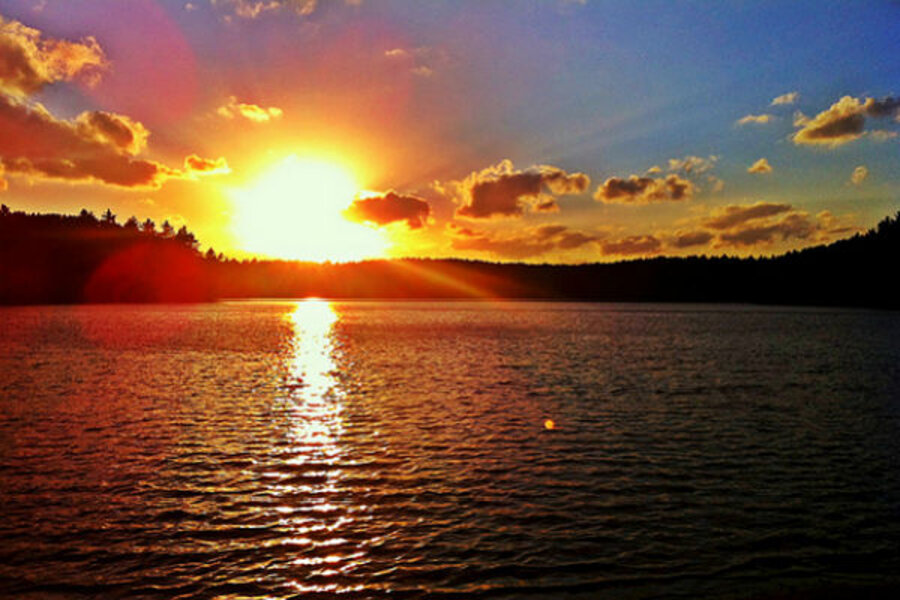Climate change alters ecosystems from Walden Pond to 'The Shack'
Loading...
The warmest springs on record caused flowers to bloom at their earliest dates in decades at two historic sites, according to new research.
The findings, published online today (Jan. 16) in the journal PLoS ONE, show just how much climate change has altered ecosystems throughout the temperate areas of the United States. The study used 161-year-old data on flowering times from Henry David Thoreau's notebooks, as well as nearly 80-year-old data from the famous naturalist Aldo Leopold.
Scientists had previously described the Thoreau records but they hadn't combined the two naturalists' findings until now.
"Record warm temperatures (in 2010 and 2012) have resulted in record early flowering times," said study researcher Elizabeth Ellwood of Boston University. [8 Ways Global Warming Is Already Changing the World]
Famous naturalists
Henry David Thoreau was one of the most iconic figures of the 19th century. The famous naturalist and poet wrote the book "Walden" about his years living at idyllic Walden Pond in Concord, Mass. Starting in 1852 and at different points throughout his life, he also created the first "spreadsheets of flowering dates" for many well-known flowers, including the wild columbine, the pink-lady slipper orchid and the marsh marigold, Ellwood said.
Similarly, the naturalist Leopold took detailed records of first flowering times at a site called "The Shack" in wilderness near the Wisconsin River, starting in 1935.
"It's the iconic equivalent to Walden Pond for Wisconsinites," Ellwood told LiveScience.
While scholars knew of these flowering observations, many were scattered in different libraries and archives, and no one had systematically analyzed their patterns, she said.
Hotter springs, earlier blooms
To do so, Ellwood and her colleagues gathered all of Thoreau's flowering records from several archives. They then compared flowering dates with spring temperatures for 32 different flowering plants.
They found that as temperatures warmed over the last 161 years, the date of first blooms of the season crept forward, too — about 10 days earlier than when Thoreau first visited the site. During the record-breaking years of 2010 and 2012, flowering happened a full 20 to 21 days earlier. The average spring temperature at Walden Pond has increased about 6 degrees Fahrenheit (3.4 degrees Celsius) since Thoreau's time.
Similarly, at The Shack, as average spring temperatures rose about 3 degrees Fahrenheit (1.7 degrees Celsius) over the last eight decades, first flowering came a week early for the 23 species they studied. During the hottest years in the United States (2010 and 2012), flowering came 24 days earlier than in Leopold's time.
Still adapting
The research may have tracked just two sites, but has broad implications, said Elizabeth Wolkovich, a climate change ecologist at the University of British Columbia who was not involved in the study.
"One is deep within the country and one is on the coast," Wolkovich said.
That means the findings probably apply to temperate climates throughout a large swath of the United States, she told LiveScience.
Though Thoreau and Leopold's works have highlighted how much climate change alters ecosystems, in some ways, the findings are good news.
At some point, the climate will get too hot for plants to survive without evolving, but the fact that the plant flowering time is still changing in step with the temperature means they haven't hit that point yet, said David Inouye, a University of Maryland biologist who was not involved in the study.
Follow LiveScience on Twitter @livescience. We're also on Facebook & Google+.







